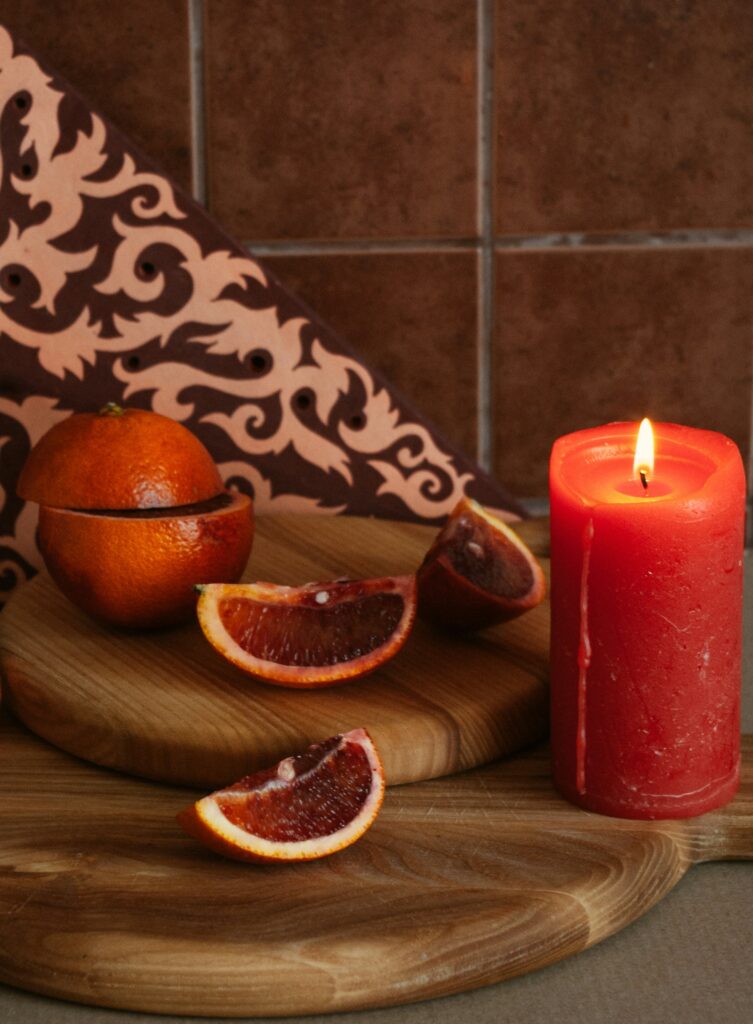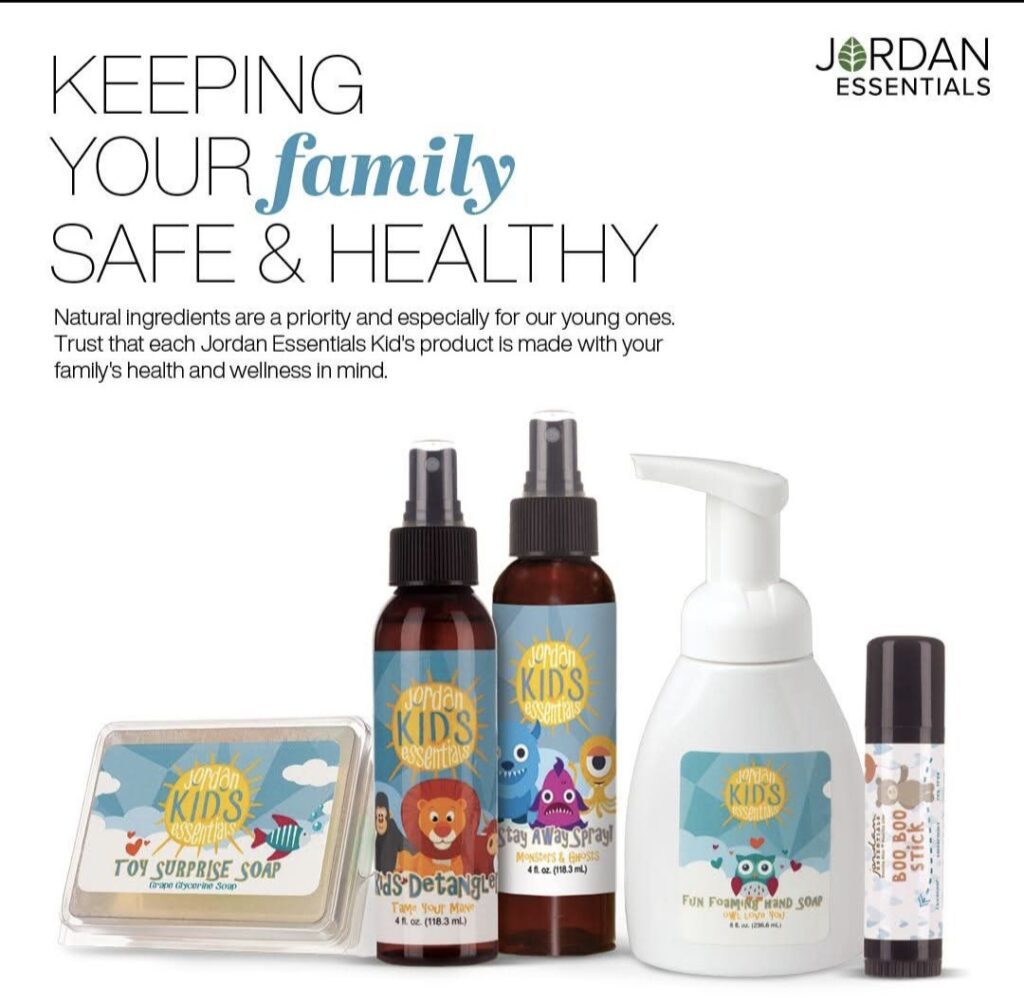Creating a nontoxic home may seem like a daunting task, but it doesn’t have to be. With a few small changes, you can make a big difference in reducing the chemicals and toxins that your family is exposed to. Here are ten easy swaps to get you started:

1. Ditch Artificial Air Fresheners
Swap out store-bought air fresheners and candles, which are filled with synthetic fragrances, for natural alternatives like essential oil diffusers or plant-based and beeswax candles. Many commercial air fresheners release harmful volatile organic compounds (VOCs) into the air, which can aggravate allergies and affect respiratory health. Even those labeled as “green” or “natural” may contain undisclosed chemicals.
Consider switching to essential oils, such as the Resistance blend from Jordan Essentials—perfect for warding off winter germs—or a refreshing citrus oil if you prefer a bright, uplifting aroma. You can use a diffuser, make your own spray with water and essential oils. Or even simmer spices like cinnamon, orange peels, and cloves on the stove. These options not only smell amazing but are also free of harmful additives. Find your favorite essential oil fragrances at reputable companies that you trust.
2. Go Green with Cleaning Products
Trade harsh chemical cleaners for DIY options like vinegar, baking soda, and castile soap. Many household cleaners contain toxic substances like ammonia, bleach, and synthetic fragrances that can irritate the skin, eyes, and lungs. Over time, exposure to these chemicals can impact long-term health.
If DIY isn’t your style, there are plenty of eco-friendly brands that offer safer cleaning products that you would be able to use around your children and pets without worry of toxic chemical exposure.

3. Choose Glass Over Plastic
Replace plastic food storage containers with glass ones. Plastics can leach chemicals, especially when exposed to heat, such as in the microwave or dishwasher. This can contaminate your food and beverages with harmful substances like BPA and phthalates.
Glass containers are a safer and more sustainable option. They are easy to clean, don’t retain odors, and last longer than plastic. Plus, they’re versatile and can go straight from the fridge to the oven, making meal prep a breeze.
4. Filter Your Water
Install a water filter for your drinking and cooking water. Tap water often contains contaminants like chlorine, lead, and pesticides, which can affect your health over time. Even bottled water isn’t always a safer option, as it can also contain microplastics.
Water filters come in many forms, from simple pitcher systems to whole-house filtration units. Choose one that fits your budget and needs. Filtering your water not only improves its taste but also ensures that you’re consuming fewer harmful substances.
5. Opt for Non-Toxic Cookware
Swap out nonstick pans coated with Teflon or other chemicals for safer alternatives like cast iron, stainless steel, or ceramic cookware. Nonstick coatings can release toxic fumes when overheated, posing risks to both humans and pets.
Cast iron and stainless steel are excellent options for everyday cooking. They’re durable, heat evenly, and don’t release harmful substances. Ceramic cookware is another good choice, offering nonstick properties without the chemical risks.
6. Switch to Natural Laundry Products
Conventional laundry detergents and fabric softeners often contain dyes, fragrances, and harsh chemicals. These substances can cling to your clothes and irritate your skin, especially for children and those with sensitivities.
Use a plant-based detergent or natural alternatives like soap nuts. Wool dryer balls are a fantastic substitute for fabric softeners—they soften clothes naturally and reduce drying time, saving energy in the process. Enhance the freshness, of your laundry, by adding a few drops of your favorite essential oil to the dryer ball for a light, natural fragrance.
7. Upgrade Your Bedding
Switch to organic cotton or bamboo sheets and bedding to avoid exposure to pesticides and formaldehyde. Conventional bedding materials are often treated with chemicals that can off-gas into your bedroom environment.
Organic bedding is not only safer but also more breathable and comfortable. These materials are produced without harmful chemicals, making them a healthier choice for your family and better for the environment.
8. Use Safer Personal Care Products
Many personal care items contain parabens, phthalates, and synthetic fragrances, which can disrupt hormones and cause skin irritation. From soaps and shampoos to lotions and deodorants, these hidden toxins can accumulate in your body over time.

Try making your own beauty products using simple ingredients like coconut oil, shea butter, and organic essential oils. Not only are they safer, but they’re also more often affordable and customizable to your needs. But, if donning an apron and whipping up your own batch isn’t your thing, then there are other alternatives. Find a clean, nontoxic company that you trust for your daily hygiene products. Or go to your local farmers market and scope out what is being offered there.
9. Purify Your Air Naturally
Add houseplants like spider plants, snake plants, or peace lilies to your home. These plants naturally filter toxins from the air while adding a touch of greenery to your space. They can help remove pollutants like formaldehyde and benzene, improving indoor air quality.
For an even bigger impact, pair plants with good ventilation and regular cleaning. Avoid chemical-laden air purifiers and instead focus on natural methods to keep your home’s air fresh and clean.
10. Say No to Pesticides
Avoid chemical pesticides in your yard or garden. These substances can contaminate soil and water, harm beneficial insects, and pose risks to your family’s health. Even small amounts of exposure can have long-term effects.
Use natural options like neem oil, diatomaceous earth, or companion planting to manage pests without resorting to chemicals. These methods are safer, environmentally friendly, and just as effective when used correctly.
Small Changes, Big Impact
I don’t recommend overhauling your home all at once. It would be too overwhelming and that’s not what we’re about. It takes baby steps to make these lifestyle changes sustainable. Start with one or two swaps and build from there. The company I’ve been using, to start making these changes, and would recommend is Jordan Essentials. Each change brings you closer to a safer, nontoxic living space for you and your family. So why wait? Take the first step today!

Leave a Reply